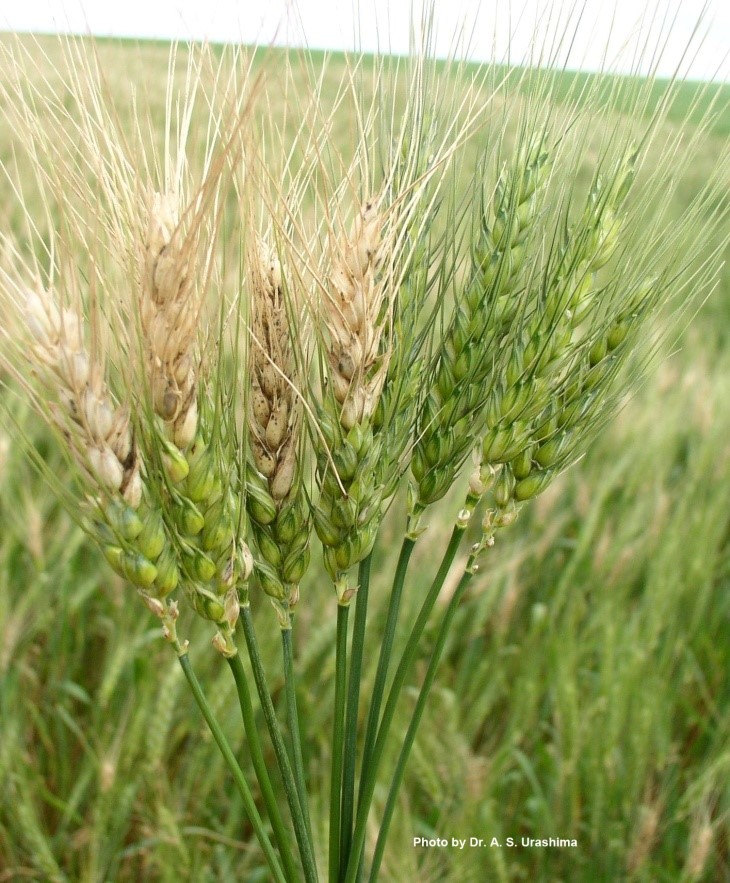MENU
The final goal of plant pathology is to reveal causes of plant diseases, and to develop effective methods for controlling them. In this laboratory we have been working on wheat blast, a devastating wheat disease. Wheat blast, caused by a subgroup (Triticum pathotype) of Pyricularia oryzae, first emerged in Brazil in 1985 and spread to neighboring countries in South America. In 2016 it suddenly appeared in Bangladesh and caused a significant loss of wheat production. Wheat blast is now becoming a pandemic disease. The first question is how this important plant pathogen evolved in Brazil. Genetic analysis revealed that the incompatibility between Lolium isolates of P. oryzae (pathogenic on ryegrass) and common wheat is governed by an avirulence gene, PWT3, and its corresponding resistance gene Rmg6 (Rwt3). We isolated PWT3 through map-based cloning. When PWT3 of a Lolium isolate was disrupted, the resulting strain gained virulence on wheat cultivars carrying Rwt3. These results indicate that mutations or deletions of PWT3 would lead to a gain of virulence on a majority of wheat cultivars. Among local landraces of common wheat collected worldwide, Rwt3 carriers accounted for ~77% and the remaining were lacking Rwt3. Historical data on wheat cultivation in Brazil suggest that the wheat blast fungus evolved due to widespread deployment of rwt3 wheat followed by the loss of function of PWT3. This implies that the rwt3 wheat served as a springboard for the host jump to wheat. Resistance genes against this new pathogen are very rare in common wheat populations. However, we found two major genes against the wheat blast fungus, Rmg8 and RmgGR119. We are now introducing these genes into leading varieties in Japan.
